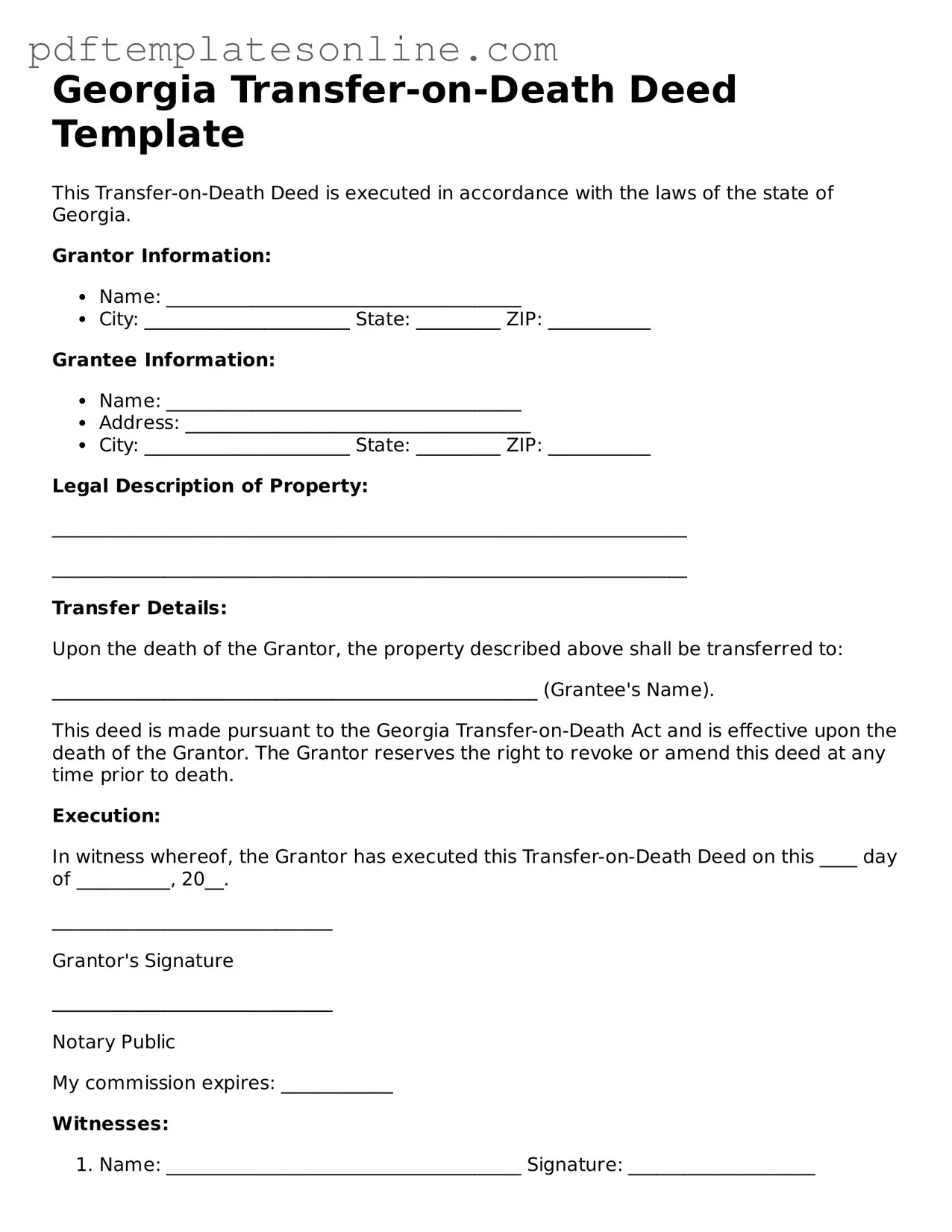Filling out a Georgia Transfer-on-Death Deed form can seem straightforward, but many individuals make common mistakes that can lead to complications down the line. One prevalent error is failing to include the correct legal description of the property. This description must be precise, as it identifies the property being transferred. Without it, the deed may be deemed invalid, leaving your intentions unfulfilled.
Another frequent mistake involves not properly identifying the beneficiary. It’s essential to clearly state the full name of the person receiving the property. Omitting a middle name or using an incorrect spelling can create confusion and potentially lead to disputes among heirs.
Some individuals neglect to sign the deed in the presence of a notary public. In Georgia, a Transfer-on-Death Deed must be notarized to be valid. Failing to do this step can invalidate the entire document, meaning your property will not transfer as intended.
Additionally, many people overlook the requirement to record the deed with the county clerk's office. Even if the deed is filled out correctly, it must be filed to be effective. Without recording, the deed has no legal effect, and the property may not pass to the intended beneficiary.
Another common oversight is not considering the implications of multiple beneficiaries. If more than one person is named, the deed should specify how the property will be divided. Without clear instructions, conflicts may arise among beneficiaries, complicating the transfer process.
Some individuals forget to update the deed after significant life events, such as marriage or divorce. Changes in marital status can affect property rights, and failing to revise the deed accordingly can lead to unintended consequences.
Moreover, people often misinterpret the nature of a Transfer-on-Death Deed. It does not transfer ownership during the grantor's lifetime. Understanding this distinction is crucial, as some may mistakenly believe they can use the deed to avoid probate while still retaining control of the property.
Another mistake involves using outdated or incorrect forms. Legal documents can change, and using an old version of the Transfer-on-Death Deed may not comply with current laws. Always ensure you are using the most recent form available.
Furthermore, individuals may fail to communicate their intentions with beneficiaries. While the deed itself is a legal document, discussing your plans with your loved ones can prevent misunderstandings and ensure everyone is on the same page.
Lastly, neglecting to seek professional advice can be a significant error. While it’s possible to complete the deed independently, consulting with a legal expert can help clarify any uncertainties and ensure that all aspects of the deed are correctly addressed. Taking this step can save time and reduce stress for both the grantor and the beneficiaries.
